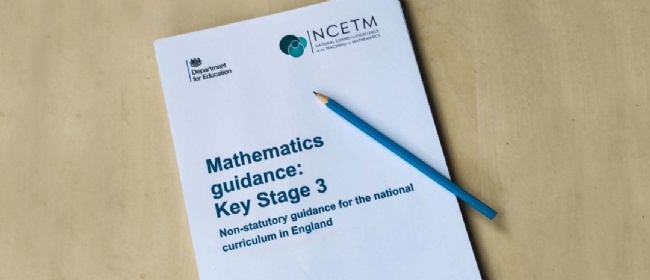New KS3 DfE guidance

The knowledge and understanding most important for the first three years of secondary school, broken down into a coherent sequence.
The DfE has published new guidance—written by the NCETM’s Secondary Team—to support the teaching of maths at Key Stage 3. For the first time, it offers a detailed ordering of the maths that students need to learn from the beginning of Year 7 until the end of Year 9.
At the heart of the guidance, for each area of maths and for every year group, are sections exemplifying the significant key mathematical ideas that need to be taught, and learnt, in order for students to progress. In 52 separate areas of maths, the exemplification:
- highlights common difficulties and misconceptions
- provides examples for use in lessons
- suggests questioning and other strategies for teachers to use.
The exemplification sections span the entire KS3 curriculum. So, whatever area of maths is being taught, there is a section to support a teacher to plan and teach lessons.
The overall aim of the guidance is to help teachers bring greater coherence to the KS3 curriculum by exposing connections between different mathematical topics, and how they link back to KS2 and forward to KS4. The suggested teaching approaches develop understanding of maths rather than leave students to rely on recalling disconnected algorithms.
To help teachers check on students’ prior learning, frequent reference is made to the ready-to-progress criteria introduced in the DfE’s guidance for primary maths, which came out in 2020. In a further element of support for teachers, there’s a comprehensive glossary, where the key mathematical language used in the first three years of secondary school is defined in detail.
